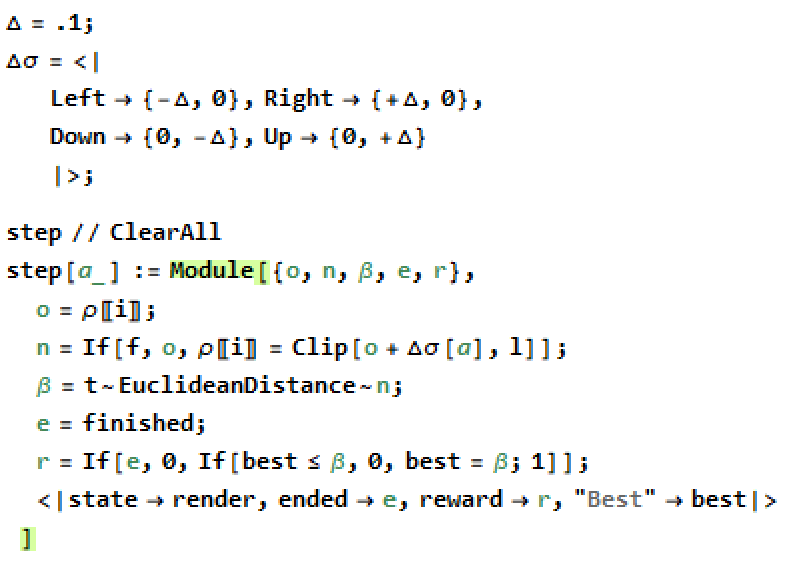After seeing that "OpenAIGym" is not exactly supported on Windows and playing around with https://www.wolfram.com/language/12/neural-network-framework/train-an-agent-in-a-reinforcement-learning-environment.html, I decided to create a new gym as part of my reinforcement learning studies!
I was progressing smoothly with the first environment Pixels-v1:
then I got stuck with the actual reinforcement learning using neural networks o__O - training produces results that just drift off screen rather than aim for the center.
Is that perhaps because of picking images as input domain instead of a tiny vector of numbers summarizing the state - please see below for details and help me out?!
I have prepared a notebook to make you see the issue right away.
Notebook
https://www.wolframcloud.com/obj/137b4dd6-937a-47ad-b0b0-10af0ae06ed6
- evaluate all initialization cells
- scroll to the bottom of the notebook
(Please make and use your own copy if you can.)
Context
The first environment (Pixels-v1) is going to be that of a few happy pixels surviving against various simple hazards.
"ObservedState": a 40*40Image"ActionSpace":{Left, Right, Up, Down}"Step": I am not sure how to define the reward here for the neural network to converge, intention for the simplest case:Reward == 1if stepped closer than ever before to center, otherwise0; alsoEnded == Trueif active Pixel hit edges.
Questions
I would expect my policy network to use the environment image directly.
policyInput = NetEncoder[{"Image", {40, 40}, "Grayscale"}];
policyOutput = NetDecoder[actionClass];
policy = NetInitialize@NetChain[
{
4, SoftmaxLayer[]
},
"Input" -> policyInput,
"Output" -> policyOutput
]
policyOutput;
policy // netSize
- Should I change the
"ObservedState"from being an image of binary 40*40 image with the active pixel being a single pixel to something more noticable to the neural net? - Should I change the
policynetwork definition (snippet above), how? - Should I change the
lossfunction definition, how? - Should I change the
stepfunction definition (snippet below), how, especially with regards to the"Reward"?
(where \[Rho][[i]] is the active pixel.)
I would strongly appreciate if someone could provide detailed guidance on what I am missing at this point. I would love to make Mathematica more accessible for beginners of reinforcement learning with neural networks.
Notebook: https://www.wolframcloud.com/obj/137b4dd6-937a-47ad-b0b0-10af0ae06ed6
- evaluate all initialization cells and
- scroll to the bottom of the notebook
(Please make and use your own copy if you can. Same link as above.)
(If this is not the right place / way to pose this question, please tell me how to correct / where to move it and I will oblige.)



version-xxtags without a good reason (i.e. an issue that could in principle apply to other versions but unexpectedly it does not). $\endgroup$